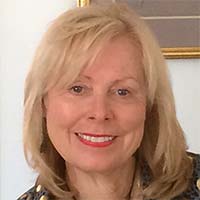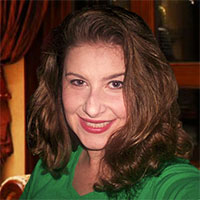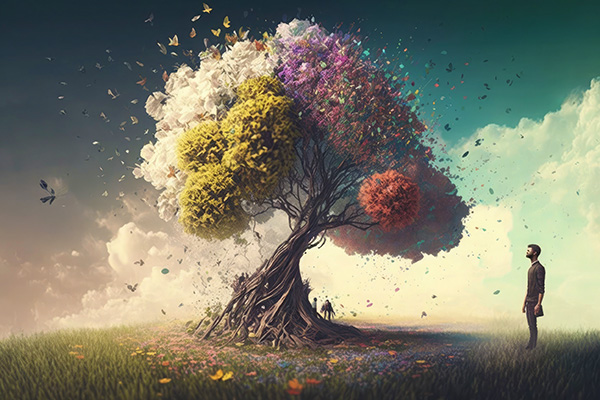How to Start Embracing Your Optimal Life Beginning Today
 Several years back, my duties led me to the exquisitely furnished penthouse of a retired doctor who had once practiced medicine. I recall the sheer amazement I felt as I examined the impressive array of books that decorated the walls of his residence.
Several years back, my duties led me to the exquisitely furnished penthouse of a retired doctor who had once practiced medicine. I recall the sheer amazement I felt as I examined the impressive array of books that decorated the walls of his residence.
“Your library is genuinely remarkable,” were my words as I entered his elegant abode.
“Indeed, I dedicated a significant part of my life to my career, and one of my few joys outside of work was to acquire the books that inspired me. Regrettably, my busy schedule and long hours left little room for reading most of them. I always assured myself that one day, upon retirement, I would delve into all these extraordinary volumes,” he explained. “Sadly, that day has now passed.”
It was too late…for he had regrettably lost his sight due to an illness.
I will forever remember that sorrowful instant, standing in that lovely space filled with some of the greatest literary masterpieces ever created. To this day, it reminds me how crucial it is to engage in activities that bring us happiness while we still can.
The lesson here is that, despite the skilled services the blind physician rendered to his patients and the field of medicine, he failed to carve out enough time for his own joy and satisfaction in the present.
This is precisely why we need to focus on living in the now! Frequently, we defer our passions to a later date under the assumption that time is on our side. However, embracing the present moment lets us cherish each instant, which nurtures joy and contentment.
We often emphasize the past or the future rather than the present. We postpone tasks for tomorrow or the following day, preventing vital life energy from nourishing some of our most pleasurable experiences in the here and now.
Many individuals die with their songs still inside them. Why does this happen? Too frequently, it’s because they are always preparing to truly live. Before they realize it, time slips away ~ Oliver Wendell Holmes
There is truly no benefit in fixating on the past. Likewise, it is futile to chastise ourselves for unachieved objectives from years gone by. What truly benefits us is extracting the valuable insights from our previous errors, setbacks, and disappointments and applying them to move ahead. That’s all that counts. Mission accomplished!
Fretting about the future is equally unproductive. It often indicates that we underestimate our potential as creators and fail to acknowledge the broader purpose of our lives and our role in a divine scheme far beyond our comprehension. My husband used to say, “Stop worrying, dear, a meteor could strike us tomorrow, and all this anxiety would have been such a waste of energy!”
It is no coincidence that living mindfully and striving to be completely present is a recurring theme in numerous spiritual, esoteric, and mystical traditions. Although the language and methods may differ, the core of these teachings is anchored in fostering mindfulness, self-awareness, and a close relationship with our present experiences, essential for living our most fulfilling lives as spiritual beings in physical form.
Buddhist Mindfulness & Presence
In Buddhism, the practice of mindfulness, or sati, is deemed foundational. Mindfulness entails being entirely conscious of one’s thoughts, feelings, and sensations in the here and now without bias.
The Buddhist journey promotes cultivating mindfulness through meditation and daily awareness activities, continuously redirecting one’s focus to the present, where suffering is alleviated, and clarity regarding reality surfaces.
The Buddha’s teachings highlight that the mind typically wanders between reminiscing about the past and fearing the future, but within the present moment is where we find authentic clarity and tranquility. This awareness leads to liberation from the suffering cycle (samsara) and nurtures compassion for oneself and others.
Hindu Philosophy & The Power Of The Present
Hinduism provides profound insights into consciousness through the concepts of atman (the self) and brahman (universal consciousness). The Bhagavad Gita underscores the significance of karma yoga – carrying out one’s responsibilities without attachment to the outcomes – a practice that fosters living in the present. By concentrating on actions in the moment, one frees themselves from anxieties about future repercussions.
Yoga, a spiritual discipline central to Hindu beliefs, teaches techniques like pranayama (breath control) and asanas (postures) to develop a connection with the present moment. Awareness of breathing and physical movements induces a state of presence, harmonizing body, mind, and spirit.
If you must reflect on the past, do so with forgiveness. If you must anticipate the future, do so with prayer. Nevertheless, the wisest course of action is to be present in the present…with gratitude ~ Maya Angelou
Esoteric Traditions & Conscious Awareness
Esoteric paths such as Hermeticism, Theosophy, and the teachings of mystics like G.I. Gurdjieff emphasize the importance of conscious awareness and self-remembering.
Gurdjieff posited that most individuals move through life in a state of “waking sleep,” unconsciously reacting to external stimuli. Genuine freedom, according to Gurdjieff, arises from awakening one’s awareness and becoming fully conscious of internal and external experiences.
The Hermetic principle of “as above, so below” encourages introspection, illustrating that by mastering your internal state, you can exert influence over the external world. Within this framework, self-awareness connects to spiritual elevation and a more profound comprehension of universal laws.
Theosophy regards consciousness as essential to grasping the deeper truths of existence. Theosophists assert that through mindfulness and conscious living, individuals can tap into higher realms of spiritual wisdom and understand the eternal essence of the soul.
Sufi Mysticism & The Divine Presence
In Sufi mysticism, the principle of dhikr, or remembrance, is central to living with heightened awareness. Dhikr consists of the rhythmic recitation of God’s name and attributes, promoting attunement to the divine in every instant. Sufis believe that as awareness of God’s presence increases, the ego diminishes, facilitating a life steeped in divine love and unity.
Rumi, an esteemed Sufi poet, often described the beauty of residing in the moment, stating, “The moment you embrace what you have received, the door will open.” For Sufis, being present is a gateway to experiencing divine love and the eternal now.
Taoism & The Flow Of Life
In Taoism, harmonizing with the tao (the way) is seen as the key to spiritual contentment. Taoist teachings encourage surrendering to life’s flow, being present, and accepting each moment as it presents itself. The Tao Te Ching suggests that by being decidedly present and receptive to the natural rhythm of events, one can attain a life filled with peace and equilibrium.
In Taoism, presence signifies alignment with life’s inherent rhythm rather than control over it. The practice of Tai Chi, a form of moving meditation, fosters this fluid awareness by grounding the practitioner through breath and motion.
Today is your life. The only life you are guaranteed. Make every day count. Become engrossed in something. Awaken your spirit. Cultivate a hobby. Allow the winds of enthusiasm to invigorate you. Live today with passion ~ Dale Carnegie
Indigenous Spirituality & Natural Harmony
Indigenous spiritual practices highlight the importance of living in unity with nature and being fully aware of the earth’s cycles. For instance, in Native American spirituality, profound awareness and presence are cultivated through rituals, ceremonies, and honoring the natural environment.
The practice of walking mindfully through nature, heeding the elements, and being intensely aware of one’s environment fosters a connection to the present. Consciousness within these traditions serves to honor both the self and the earth as part of a deeply intertwined web of life.
Christianity & Divine Providence
Christian teachings also stress the significance of maintaining awareness and being completely present. Jesus advised, “Do not be anxious about tomorrow, for tomorrow will worry about itself. Each day has enough trouble of its own” (Matthew 6:34). Traditionally, Christianity encourages believers to have faith in God’s provision and to focus on living righteously in the moment instead of being overly concerned about the future.
Christian mystics like Brother Lawrence emphasized the “presence of God” within daily tasks. In his book The Practice of the Presence of God, he discusses how to cultivate an awareness of divine presence throughout various activities, whether through prayer or routine chores like cooking or cleaning. This approach invites a discovery of the sacred within the mundane and encourages being fully engaged in every action as a form of worship.
Contemplative prayer, embraced by Christian mystics such as St. Teresa of Avila and St. John of the Cross, nurtures a silent stillness that connects one to God in the present moment. In this quiet receptivity, one may profoundly experience God’s love in the “now,” unencumbered by past or future distractions. For Christians, living with awareness transcends personal mindfulness; it involves being open to divine guidance in every facet of life.
Modern Metaphysics & Conscious Creation
In contemporary metaphysical traditions like New Thought, living with awareness is recognized as vital for personal and spiritual development as well as for effective manifestation.
New Thought highlights the mind’s power in shaping reality, teaching that consciously directing thoughts to align with universal principles such as love, abundance, and peace is crucial. By staying completely aware of thoughts and feelings in the present moment, individuals can access the creative potential of the divine mind, enabling them to manifest positive results and transformation.
Embracing awareness and grounding oneself in the now is not only important for a joyful existence, but also essential to what we generate for the future. To bring forth goodness in our future, we must continually nurture the positive intent behind our actions rather than hinder our future outcomes through self-defeating behavior, negativity, and fear-driven projections.
Across these diverse traditions, living with awareness transcends being a mental exercise; it is a spiritual journey toward self-discovery, inner serenity, and a profound connection to the divine and the cosmos. Whether through meditation, breath practices, prayer, or conscious living, each tradition presents powerful methods for becoming fully present and savoring the richness of each moment.
Unease, anxiety, tension, stress, worry – all manifestations of fear – arise from an excessive focus on the future and a deficiency of presence. Guilt, regret, resentment, grievances, sorrow, bitterness, and all forms of un-forgiveness stem from an overwhelming concentration on the past, leaving little room for presence ~ Eckhart Tolle
How To Start Living In The Now
To begin living more passionately in the present moment, consider integrating some of these straightforward practices into your daily life:
Establish intentions: Start each day by declaring a clear, purposeful intention as soon as you awaken.
Engage in mindfulness: Center yourself by focusing on your breath, sensations, or surroundings.
Stimulate your senses: Be aware of the sounds, textures, and colors surrounding you.
Take intervals: Pause at various points during the day to reset and ground yourself.
Maintain a gratitude journal: Record things for which you are thankful each day.
Engage in meditation or prayer: Dedicate a few moments each day to silent reflection.
Pursue your passions: Allocate time each week for your genuine interests.
Undertake a digital detox: Disconnect from screens and turn off devices regularly to reconnect with real life.
Cultivate self-compassion: Release past regrets and future fears.
Keep in mind that the present is a gift—don’t wait until it’s too late to appreciate it. The capacity to be fully present is available to you, right here, right now. Embracing the moment paves the way for inner tranquility, clarity, and a deeper connection with your higher self, the divine, and the world surrounding you. Strive to be more present today and permit yourself to experience the beauty and promise of each extraordinary moment.
|
Shani is a qualified practitioner in Reiki, aromatherapy, reflexology, body spin, and animal telepathy who received psychic development training at the Arthur Findlay College of Psychic Research in England. A published writer, her articles and predictions have appeared in several respected magazines and on psychic websites, and she has read for many celebrities and even heads of state in Africa. Because of her empathy, people find it easy to connect with her. Every month, she attends a psychic circle and the information that comes through from Spirit never ceases to amaze everyone present. Though she was born in London, Shani has traveled the globe and has studied the art of African Mysticism, bringing her unique flavor to those seeking her incredible talents. What she has taken away from her many travels abroad, is that there is always a sort of longing clients have to be connected to the source of their being. Get a reading with Shani at PsychicAccess.com. |







